The art of the moment: a strategic guide to real-time marketing (without crashing)

Picture this: it's Monday morning. Your social feed is clogged. Everyone is talking about one unexpected event: a blackout during a global sporting event, a bizarre meme that's conquered the internet overnight, or even... a piece of work equipment used in a decidedly unconventional way during a museum heist.
While the world comments, laughs or expresses outrage, something clicks at a brand's headquarters. In just a few minutes, a team creates a piece of content. Not just any content. It's content that inserts itself into that conversation with the agility of a cat and the precision of a surgeon. A post, a tweet, a story. And suddenly, that brand is no longer just selling a product; it's participating in culture, proving it's alive, present and, above all, has a sense of humour.
This, ladies and gentlemen, is real-time marketing (RTM).
It's the most adrenaline-fuelled discipline in digital marketing. A territory where you either win big or fail spectacularly. It's not simply "posting a photo for Father's Day"; it's a strategic, almost instinctive reaction to world events.
But how can you be quick without being reckless? How do you tell a brilliant opportunity from a PR disaster waiting to happen? In this complete guide, let's dismantle the mechanism of RTM, analyse what it takes to do it well and, most importantly, when it's time to stand still and not hit 'publish'.
What is real-time marketing (really)? Beyond the hashtag
Real-time marketing is often confused with simple contextual marketing. Posting "Merry Christmas" on 25th December isn't RTM; it's planning. True RTM moves along two main tracks:
-
Reactive (or opportunistic) RTM: This is the most famous and the riskiest. It occurs when a brand reacts to an unexpected event. The Super Bowl blackout, a wardrobe malfunction at the Oscars, a politician's tweet, a high-profile theft. Here, speed is everything.
-
Proactive (or anticipatory) RTM: This is "planned" RTM. The brand knows an event is about to happen (the World Cup final, the release of a highly anticipated TV series, an election) and prepares a "war room". The team is ready to react to what happens during the event.
In both cases, the goal isn't to sell, at least not directly. The goal is relevance.
RTM works because it harnesses a powerful psychological principle: synchronicity. When a brand shows it's living in the same present as us, sharing our same surprises, frustrations or laughs, it stops being a corporate entity and becomes, for a moment, "part of the conversation". It creates a sense of belonging, an "Hey, they noticed it too!" feeling.
This shifts the brand's perception from interrupter (classic advertising) to participant (relevant content).
The RTM triangle of success: speed, relevance and voice
To avoid turning an opportunity into a disaster, every single RTM action must pass the test of these three pillars. Imagine them as an equilateral triangle: if one side is weak, the entire structure collapses.
1. Speed (but not haste)
In RTM, timing isn't just important: it's everything. A meme about yesterday's event is already digital archaeology. The "golden window" to react is often just a few minutes, or a few hours at most.
This doesn't mean "doing things in a rush". It means being prepared. Effective RTM requires an agile organisational structure:
-
Who's listening? You need a social media manager or community manager who is constantly tuned in to the channels (Google Trends, X/Twitter, TikTok, Reddit).
-
Who's creating? A copywriter and a graphic designer who are ready to drop everything and produce the content in 15 minutes.
-
Who's approving? This is the critical part. If it takes three managerial levels and the legal department to approve a post, you've already lost. You need a short chain of command, with one person (often the head of marketing) who has the authority to give an immediate "Go" or "No".
Speed without strategy is just chaos. Haste leads to not checking the context, and that's where the trouble starts.
2. Relevance (the anti-flop filter)
This is the million-dollar question: "Does my brand have the right to talk about this?"
Being quick is useless if your intervention feels forced. If a B2B software company tries to jump on a TikTok dance trend, the result is often colossally cringeworthy.
Relevance is measured on two levels:
-
Relevance to the audience: Does your community care about this topic? If your followers are tech enthusiasts, perhaps a comment on the latest Apple keynote is perfect. If they're into gardening, maybe not.
-
Relevance to the brand: Is there a link, however subtle, between the event and what you do?
-
Weak example: A yoghurt brand commenting on a football match. (Forced).
-
Strong example: An optician's brand (like Specsavers in the UK) commenting on a blatant refereeing error. (Perfect! The link is "sight").
-
Genius example: A lift manufacturer (Böcker) commenting on a theft carried out with one of their lifts. (Risky but brilliant. The link is directly to the product).
-
If there's no logical connection, the brand just looks desperate for attention.
3. Voice (brand identity)
Okay, you're fast and you're relevant. Now, how do you say it?
RTM is the litmus test for your brand voice. If your tone of voice has always been institutional, serious and formal, a sudden post with a brazen meme will seem inauthentic and confuse your audience.
-
If you're an ironic brand (like Wendy's), you can be sarcastic.
-
If you're an empathetic brand (like Dove), you can use the event for a deep reflection.
-
If you're an authoritative brand (like a financial institution), you can use the event to provide a quick fact or analysis.
The case of the lift used for the heist is a masterpiece of "voice". The company used self-deprecation. It didn't condemn the act (that's not its role), it didn't boast seriously (that would have been in bad taste), but it made a joke about the product's performance ("When you're in a hurry..."). It spoke like a witty friend in the pub.
A brand without a defined voice is destined to stammer in RTM.

The RTM arsenal: tools and operational strategies
It's nice to dream of virality, but in practice, how do you organise a team to be reactive? You don't improvise. You build a system.
Phase 1: Listening (the digital "war room")
You can't react to what you don't see. The foundation of RTM is social listening.
-
Free tools:
-
X (Twitter) Pro/TweetDeck: Set up columns to monitor key industry hashtags, live event hashtags and emerging keywords.
-
Google Trends: Keep an eye on search spikes. This is often the first signal.
-
Reddit: Underrated, but it's where many memes and "raw" discussions are born before they explode elsewhere.
-
-
Professional tools:
-
Platforms like Brandwatch, Talkwalker or Meltwater are built for this. They set up automatic alerts that notify you if the volume of mentions for your brand or a specific topic suddenly explodes.
-
Listening isn't passive. It's an active hunt for the "signal" in the noise.
Phase 2: The decision-making process (the "Go/No-Go" in 5 minutes)
The team has spotted an opportunity. Now, the clock starts. You need a mental (and written) checklist to tick off in a matter of minutes.
-
Is the event negative? (Death, natural disaster, tragedy, violent crime).
-
If yes: STOP. The golden rule is: you don't joke about pain. You don't market tragedies. Ever.
-
-
Is there a non-controversial angle? (The Louvre heist case is an exception: the "damage" was material, not physical. The company waited to find out that no one was hurt. This is crucial).
-
Do we really understand the context?
-
Classic mistake: Using a hashtag without knowing what it means. (Remember DiGiorno Pizza using the #WhyIStayed hashtag, related to domestic violence, to sell pizzas? A disaster).
-
-
Is our idea original? If 50 other brands have already made the same joke, you're too late. Better to stay quiet.
-
Is it aligned with the brand? (See the "Triangle" above).
-
Is there a legal risk? (Are we using an athlete's image without a licence? Are we violating a copyright?).
If the answer to these questions is positive (or the risk is calculated and accepted), you move on to execution.
Phase 3: Creative execution (minimum effort, maximum impact)
RTM is not the time for Hollywood productions. The content must look native to the platform and immediate.
-
The king of formats: The meme. Take a well-known template and adapt it.
-
Simple text: Often, a brilliant tweet is just text. No image needed.
-
"Quick" graphics: Use tools like Canva or Adobe Express. Impactful text on a coloured background. The "done on the fly" aesthetic sometimes reinforces the idea of immediacy.
-
The reply: Sometimes the best RTM isn't a post, but a reply to someone else (perhaps a competitor brand).
The perfect content is simple, clever and needs no explanation.
The fine line: when real-time marketing becomes an own goal
For every brilliant RTM, there are nine failed attempts that range from irrelevant to deeply offensive. The marketing graveyard is full of brands that "just had a go".
Risk #1: Trivialising tragedy (the cardinal sin)
We repeat: natural disasters, terrorist attacks, deaths, humanitarian crises. These are not marketing topics. These are topics for silence, support or, at most, an institutional statement of condolence (if the brand is directly involved).
Any attempt to tie a sale to a tragedy is brand suicide. The public does not forgive opportunism based on suffering.
Risk #2: "Jumping the shark" (being irrelevant)
This is the clumsy attempt by a brand to seem "young" and "with it" when it patently is not. It's the Steve Buscemi "How do you do, fellow kids?" in marketing form.
It happens when a brand jumps on a trend (a TikTok challenge, a niche meme) without understanding it, just because "everyone else is doing it". The effect is collective embarrassment. The audience doesn't see you as relevant; they see you as desperate.
Risk #3: Blatant opportunism ("brand-washing")
This is more subtle. The brand jumps on the bandwagon of a social cause (e.g., Pride Month, Earth Day, a protest movement) not because it believes in it, but just because it's the trending topic of the day.
If your brand has never talked about sustainability, a sudden post on Earth Day will ring hollow. If you don't actively support the LGBTQ+ community, changing your logo in June is performative. This isn't RTM; it's "cause-washing", and the public (especially Gen Z) is highly trained to spot it and punish it.
Risk #4: Ignorance of the context (the "DiGiorno")
As mentioned, reacting to a hashtag on trust, just because it's trending, is like answering a question in a language you don't understand. Before you post: click on the hashtag. Read what other people are saying. Understand the sentiment. Are they laughing? Are they angry? Are they serious?
It takes 30 seconds. Not doing it is pure negligence.

Case studies: the geniuses, the bold and... the textbook mistakes
Let's analyse some examples that have made RTM history, for better or worse.
The masterpiece: Oreo, "Dunk in the Dark" (Super Bowl 2013)
-
The event: A sudden blackout at the stadium during the Super Bowl, America's most-watched (and most expensive) event.
-
The reaction: While millions of people stared at their dark screens, Oreo's Twitter account posted a simple image: a single Oreo biscuit, faintly lit in the darkness, with the caption: "Power out? No problem. You can still dunk in the dark".
-
Why it worked:
-
Speed: It was posted within minutes.
-
Preparation: They had an active "war room" for the event.
-
Relevance: They were an event sponsor, so they had the right to talk about it.
-
Voice: Simple, witty, perfectly aligned with their tagline ("dunk").
-
Context: A frustrating but non-tragic event. Perfect for a joke.
-
Oreo didn't win the Super Bowl, but it won that night's marketing, with a zero-cost post that generated more buzz than the multi-million dollar ads.
Calculated audacity: the "Agilo" lift case
-
The event: A high-profile theft at a famous European museum. Media photos clearly show the equipment used by the thieves: a lift from a German company, Böcker.
-
The reaction: The company, after confirming no one was injured, posted a meme. The photo of their "Agilo" lift resting against the museum, with the caption "When you're in a hurry" and "Your reliable partner for... quick jobs". They then (ironically) boasted about its features: speed, silence, capacity.
-
Why it worked:
-
Extremely high risk: Associating your brand with a crime is madness.
-
Context control: They waited. They saw that the online mood was more one of mockery and disbelief than tragedy.
-
Self-deprecation: They didn't condone the theft. They used self-deprecation about the fact their product was so efficient it was chosen for that "job".
-
B2B relevance: They showed their customers (construction companies, etc.) that they had personality and were "immune" to bad PR, turning a potential disaster into a show of character. Brilliant.
-
The textbook mistake: Pepsi & Kendall Jenner (2017)
-
The event: This isn't pure RTM, but it was a failed attempt to capitalise on a cultural movement (social protests, like Black Lives Matter) in real time.
-
The (fake) reaction: Pepsi created a multi-million dollar commercial in which Kendall Jenner defuses a tense protest... by offering a can of Pepsi to a police officer.
-
Why it was a disaster:
-
Trivialisation: It took an incredibly complex, painful and serious subject (police brutality and racial justice) and trivialised it, suggesting it could be solved with a fizzy drink.
-
Inauthenticity: Pepsi had no real legacy in that debate. It came across as a culture vampire, trying to monetise the protest.
-
Context: They completely misunderstood the public's sentiment, which wasn't looking for easy solutions, but for listening and change.
-
The commercial was pulled within 24 hours amid widespread apologies. It's the most expensive lesson on what not to do.
Beyond the meme: RTM in long-term strategy
Real-time marketing is not a standalone strategy. It's a tactic that fits into a wider brand strategy.
Having a viral post is great, but what happens the day after?
The real goal of RTM isn't (just) virality. It's about building the brand's personality, post by post. It's about consistently proving to your audience that you are "one of them": informed, responsive and human.
This is also crucial in B2B. The lift example proves it: the customer who needs to buy a £50,000 lift won't buy it because of the meme, but that meme will remind them that Böcker is a company with character, modern and self-confident. And between two technically identical suppliers, personality makes the difference.
RTM, when used well, is the best builder of brand affinity that exists.
Your RTM checklist (ready to use)
Keep this checklist on your desk. Before hitting 'publish' on any RTM content, run through these questions.
The "Stop & Go" RTM Checklist
-
THE TOPIC: Is it a tragedy? (Death, violence, disaster)
-
YES: 🛑 STOP. Do not post.
-
NO: ✅ Go to point 2.
-
-
THE CONTEXT: Do I 100% understand what is being discussed? Have I checked the hashtag? Do I know the sentiment (anger, irony, sadness)?
-
NO: 🛑 STOP. Investigate further.
-
YES: ✅ Go to point 3.
-
-
THE RELEVANCE: Is there a logical and unforced link between my brand and this event?
-
NO: 🛑 STOP. You're forcing it.
-
YES: ✅ Go to point 4.
-
-
THE VOICE: Is the idea consistent with my brand's usual tone of voice? (Or if it's a departure, is it calculated?)
-
NO: 🛑 STOP. You'll sound inauthentic.
-
YES: ✅ Go to point 5.
-
-
THE TIMING: Am I still on time? Or is the joke already old and everyone else has already made it?
-
IT'S TOO LATE: 🛑 STOP. Better to be silent than to be last.
-
WE'RE FIRST/WE'RE ON TIME: ✅ Go to point 6.
-
-
THE ORIGINALITY: Does my idea add value to the conversation (a smile, a thought, a fact) or is it just noise?
-
IT'S NOISE: 🛑 STOP.
-
IT ADDS VALUE: 🔥 GO! PUBLISH!
-
Conclusion: masters of the moment, not slaves to the trend
Real-time marketing is proof that marketing isn't just about editorial plans and quarterly reports. It's about instinct, culture, empathy and courage.
It's not about commenting on everything. It's about knowing when your intervention is not just wanted, but necessary to reinforce who you are. Strategic silence is as powerful as the perfect post.
As the case of the lift and the museum shows, sometimes the best marketing opportunities aren't born in a meeting, but from a chaotic real-world event. The difference is made by those who know how to seize that moment not just with speed, but with intelligence, irony and a deep respect for the context.
Is your brand ready to react? What about you?
What's the most brilliant (or most disastrous) example of real-time marketing that you remember? Tell us in the comments below.
But if you feel your brand needs to be more responsive but you lack the strategy to manage the unexpected, we at Insight are here for that. We build brands that know how to listen and speak at the right time. Contact us.
By accepting you will be accessing a service provided by a third-party external to https://insightadv.uk/

 IT
IT  EN
EN 

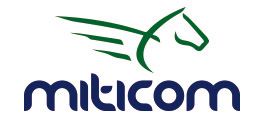


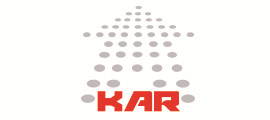
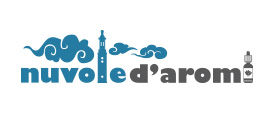
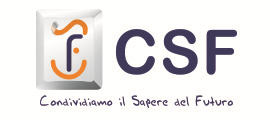

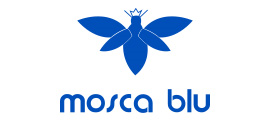

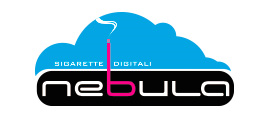
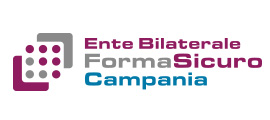

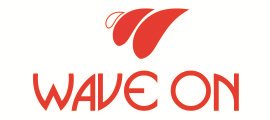

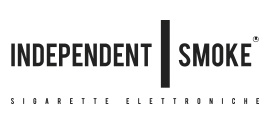
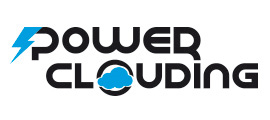


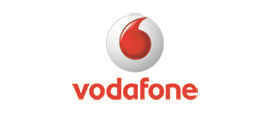


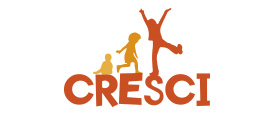
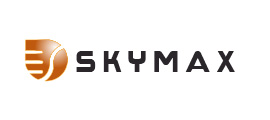
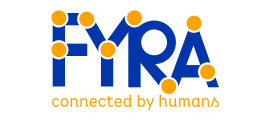



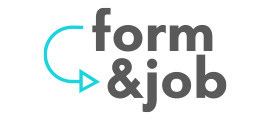
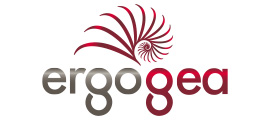
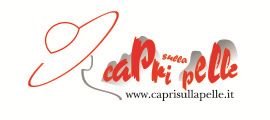
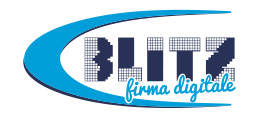


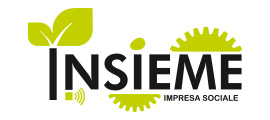


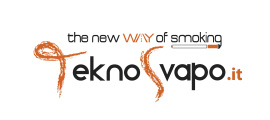



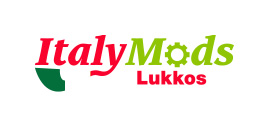
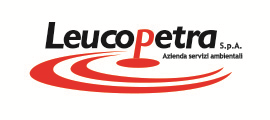





















Comments